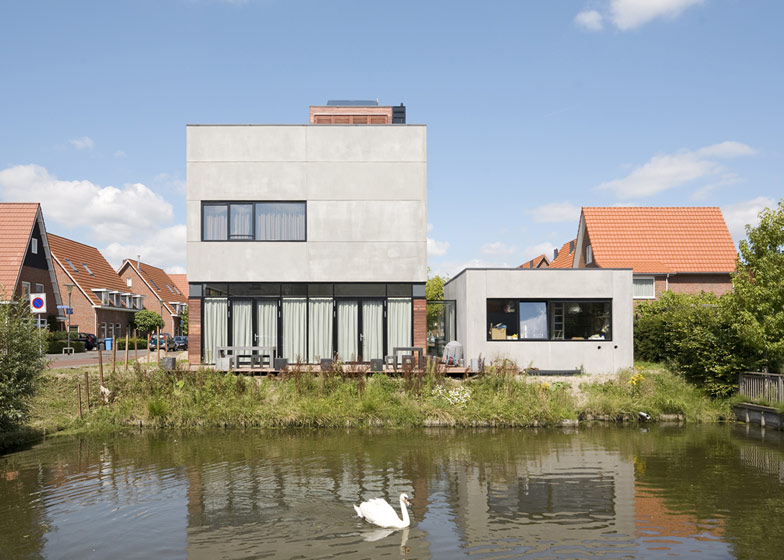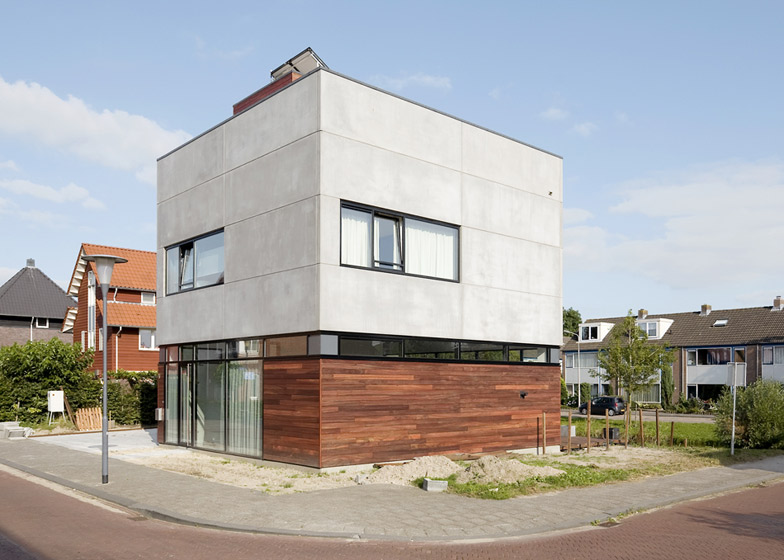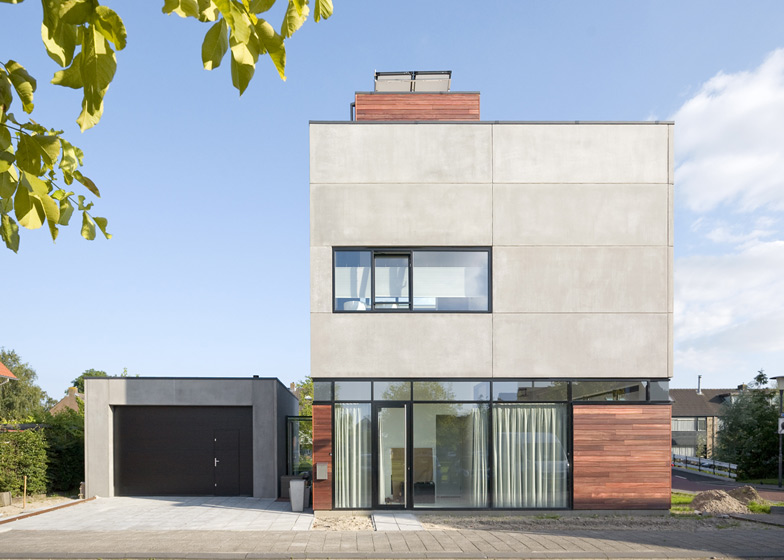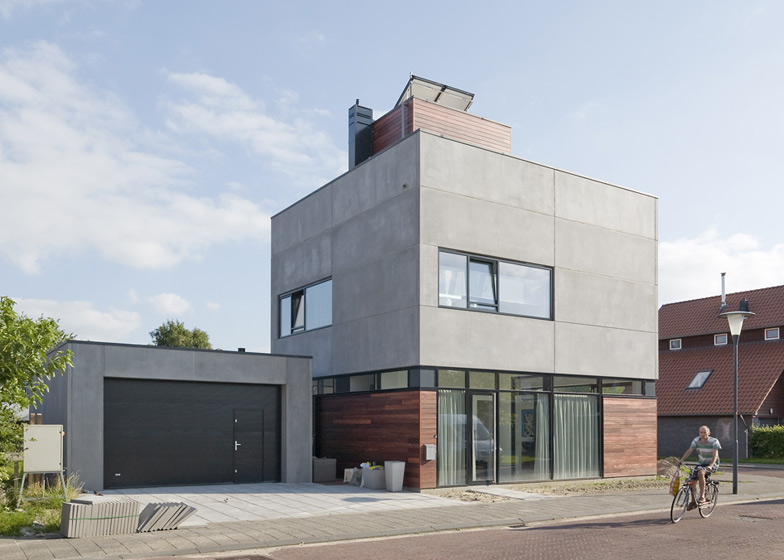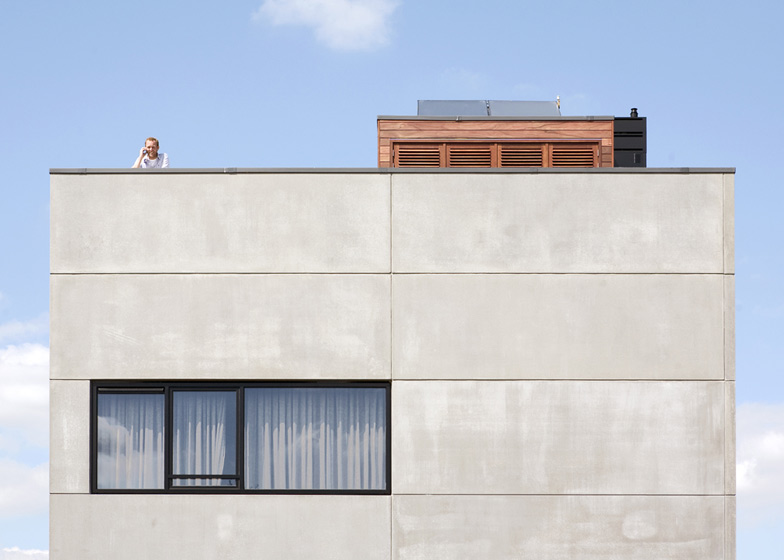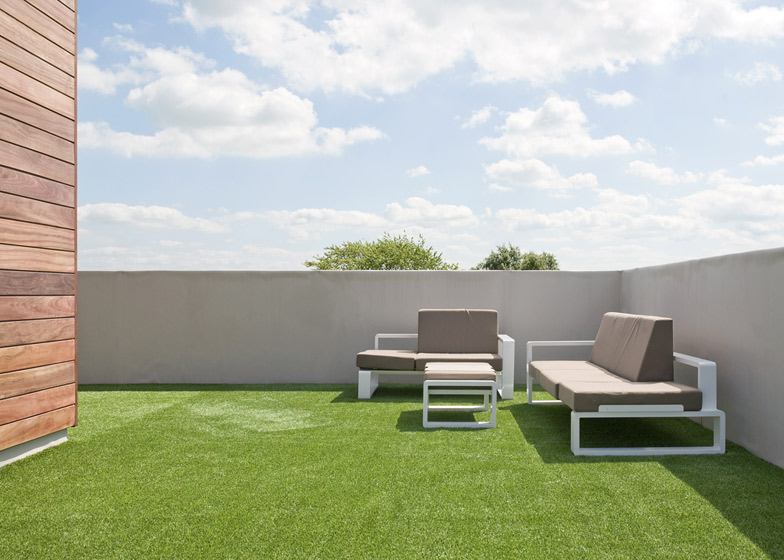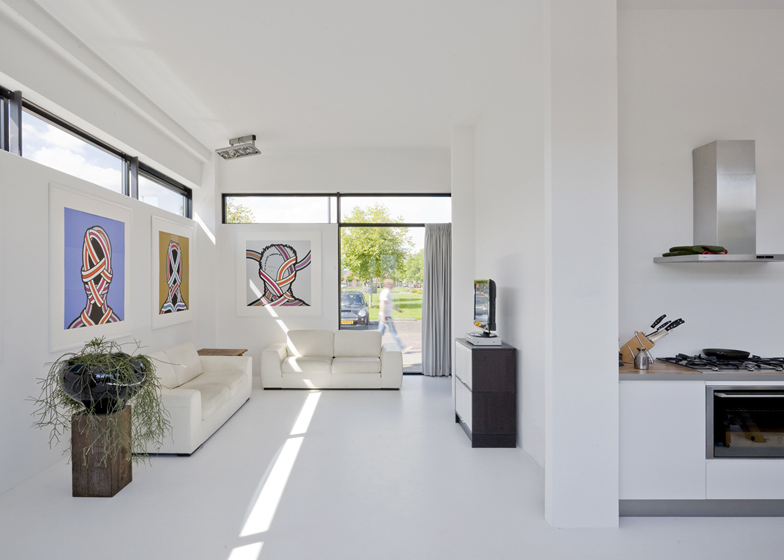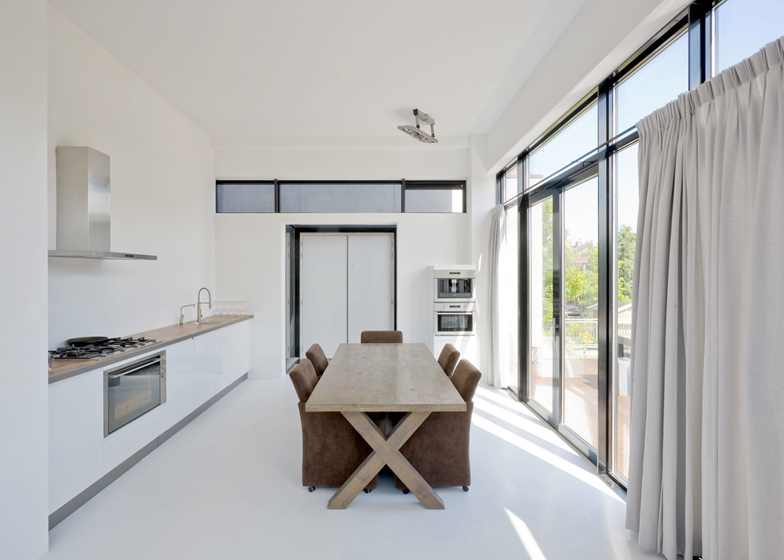A prefabricated concrete cube appears to hover above the wooden base of this house near Amsterdam by Dutch practice Engelarchitecten (+ slideshow).
Located in the town of Aalsmeer, the villa was built on a lot that had very specific development requirements set out by the local government – the building had to be a small tower, like a gatekeeper's house.
"It had to be out of the ordinary and not the same as other traditional houses in the vicinity," architect Maarten Engel told Dezeen. Fortunately, "this very much appealed to the clients, so they purchased the lot."
The architects came up with a cost-efficient cube of prefabricated concrete measuring just nine metres on each side, which sits atop a horizontally clad hardwood base.
Above the wooden base is a narrow strip of glazing to give the impression that the concrete cube is hovering slightly above it.
On the ground floor, a glass corridor connects the kitchen and living areas to a separate workspace used by one of the residents, who is a florist.
A walled roof terrace is embedded in the top of the cube and also equipped with a kitchen.
Other Dutch houses we've featured recently on Dezeen include a houseboat with geometric patterns on its facade and a pair of houses disguised as one.
See all our stories about Dutch houses »
See all stories about concrete »
Photography is by Marcel van der Burg.
Here's some more text from the architects:
Engel Architecten has realised a villa with a building system that has its roots in industrial and commercial buildings.
The villa is made from prefabricated concrete element. This system is widely used for industrial and commercial buildings, but this is one of the first times it has been used for a villa. One of the big advantages is the cost and the building speed, without having to make concession in build quality and spatial experience.
Ground floor plan
It consists of a perfect cube placed in the axis of a green strip in a newly formed neighborhood in Aalsmeer, a medium-sized town close to Amsterdam. Next to the cube a small workspace is placed. The workspace is connected to the main volume by a glass corridor. On top of the house there is a roof terrace with a built-in kitchen.
First floor elevation
The materials used are both natural and industrial: precast smooth concrete and wooden sidings made from padouk, an African FSC hardwood type. The concrete and wood are separated by glass windows. This disconnects the concrete from the wood so that the concrete block seems to hover above the wooden plinth.
Roof terrace plan

